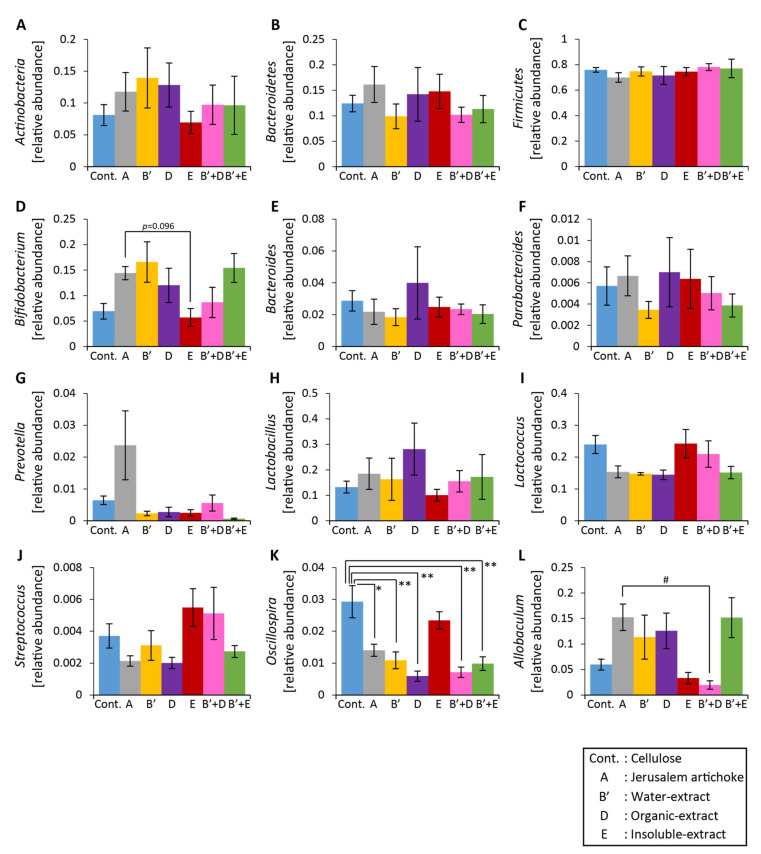Figure 10.
The relative abundance of microbes at the phylum and genus levels was hardly changed upon consumption of the Jerusalem artichoke, water-soluble extract, and organic extract. (A–C) The relative abundance of microbes at the phylum level ((A) Actinobacteria, (B) Bacteroidetes, (C) Firmicutes). (D–L) The relative abundance of microbes at the genus level ((D) Bifidobacterium, (E) Bacteroides, (F) Parabacteroides, (G) Prevotella, (H) Lactobacillus, (I) Lactococcus, (J) Streptococcus, (K) Oscillospira, (L) Allobaculum). All values are represented as mean ± SEM (Cellulose (n = 6), Jerusalem artichoke (n = 6), water-soluble extract (n = 6), organic extract (n = 6), insoluble extract (n = 6), water-soluble extract + organic extract (n = 6), water-soluble extract + insoluble extract (n = 6)). ** p < 0.01, * p < 0.05, evaluated using one-way ANOVA with Tukey post-hoc test. # p < 0.05, evaluated using the Kruskal–Wallis with Dunn post-hoc test. Cellulose, Jerusalem artichoke, water-soluble extract, organic extract, or insoluble extract are Cont., A, B’, D, or E, respectively.

